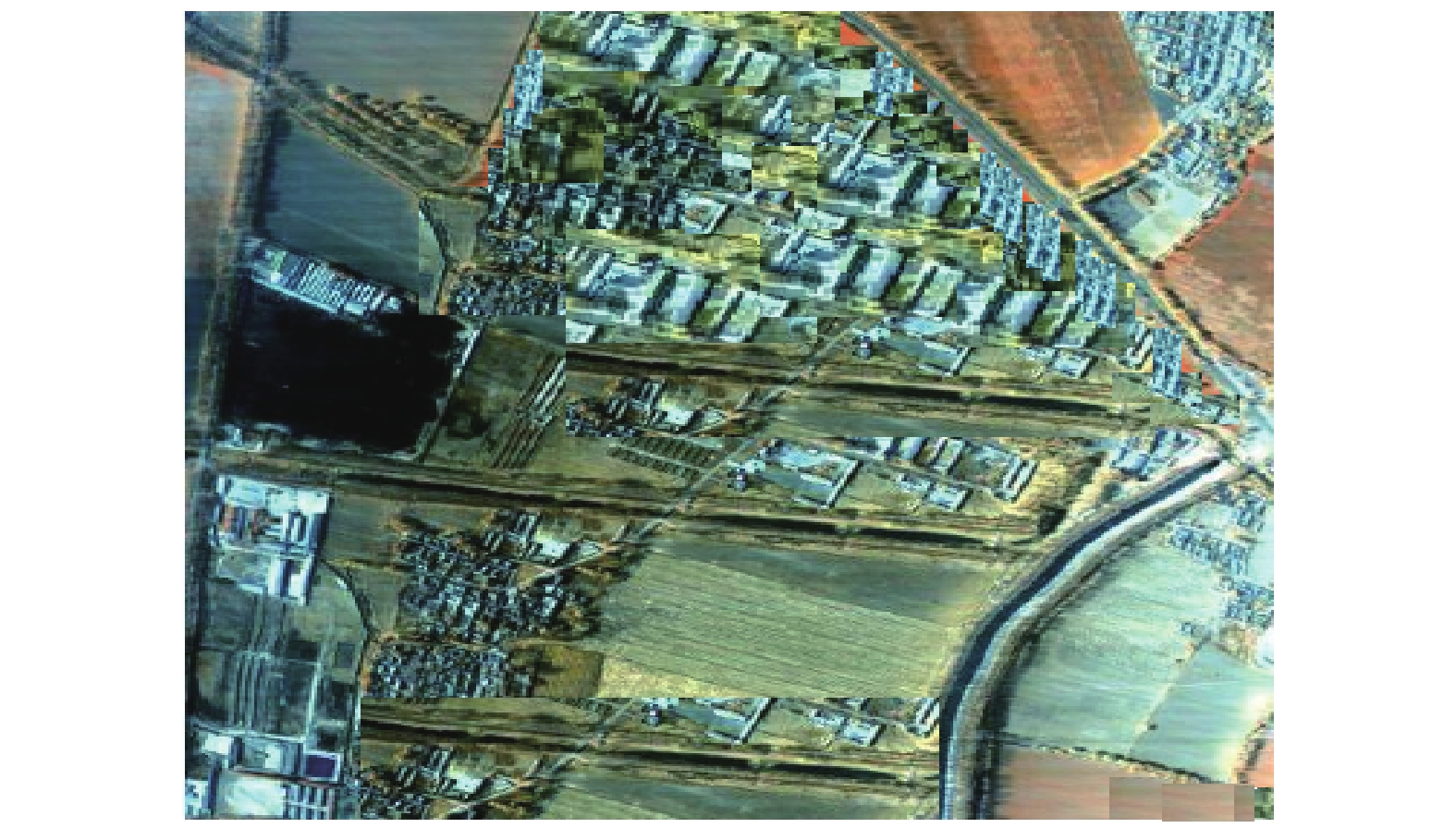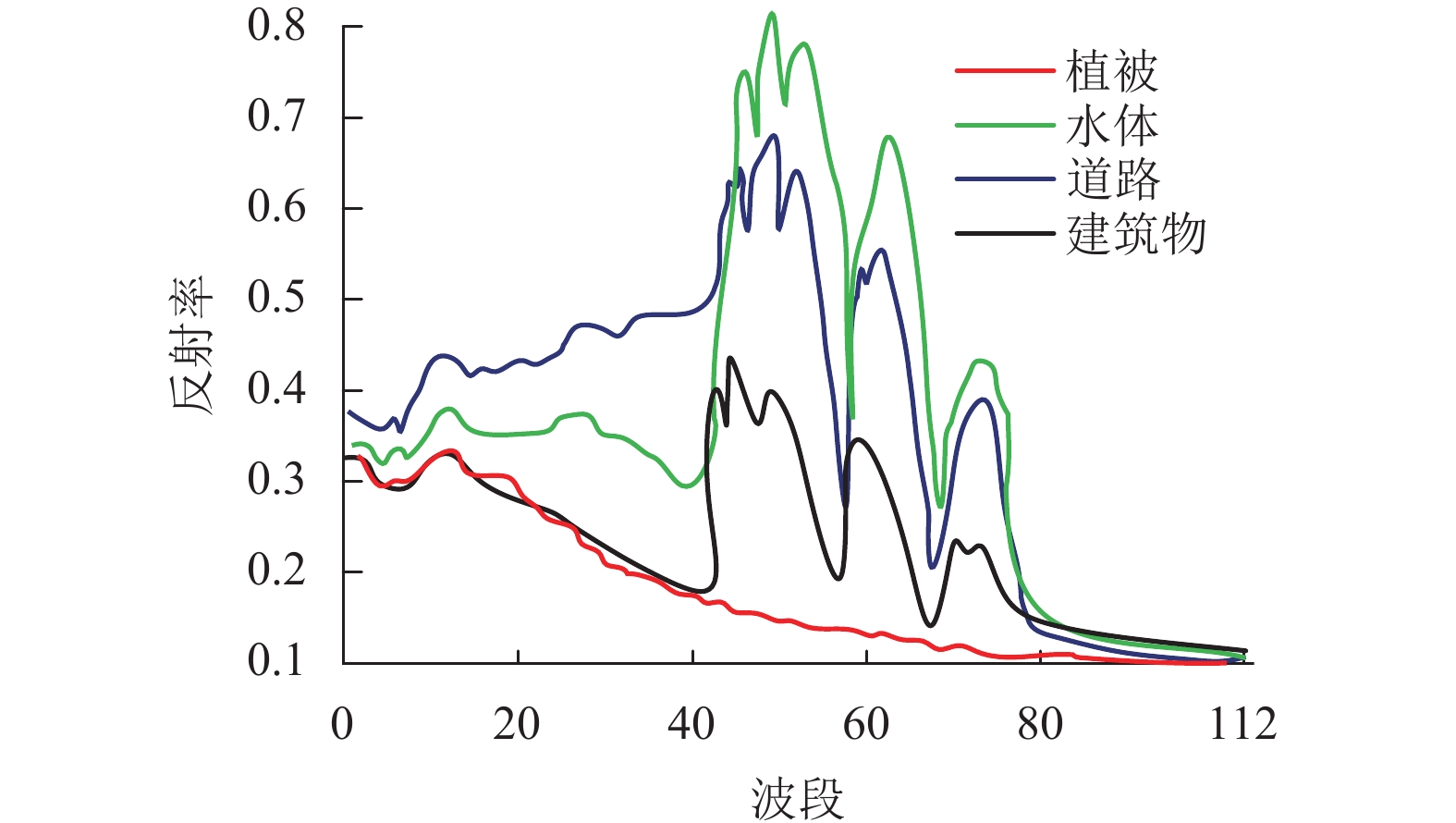Optimization of Endmember Extraction in Mixed Pixel Unmixing in Hyperspectral Images
-
摘要: 高光谱图像的混合像元分解将原始图像分解为多种纯净地物及相应的丰度,端元提取是混合像元分解的关键技术. 针对传统算法计算速度慢、搜索范围较大的特点,基于改进的ICA (independent component analysis)算法以及优化的候选端元判断方法,提出了一种优化的混合像元分解方法. 首先使用改进的算法优化端元提取方法;然后利用相邻像素的光谱特征和空间特征信息,结合并行算法对候选端元进行优化;最后利用真实的高光谱数据对该方法的性能进行了验证. 验证结果表明:该方法能有效提高端元提取精度,降低复杂度,与经典的端元提取算法N-FINDER相比,准确度提高了3.55%,解混后得到的地物分类精度有了明显改善(总体分类精度提高了2.88%).Abstract: Hyperspectral unmixing is a process for unmixing the mixed pixels of a hyperspectral image composed of several substances and their corresponding proportions. Extracting endmembers is a major problem in hyperspectral unmixing. Owing to the goal of achieving a large search range for the endmembers, the efficiency of the traditional algorithm is usually low. Based on an improved ICA(independent component analysis)and optimized endmember extraction method, an improved method of unmixing was proposed. Firstly, endmember extraction was optimized by means of an optimized FastICA algorithm. Thereafter, spatial information and spectral information were considered and combined into a multi-core parallel processing to optimize the candidate endmembers. Lastly, the performance of the proposed algorithm was verified using real hyperspectral data. The method was shown to overcome the shortcomings of the traditional method and obtain more accurate endmembers. In particular, compared to the accuracy of the traditional N-FINDER method, the accuracy of the extracted endmembers increases by 3.55%. The object classification accuracy also improves immensely, and the overall classification accuracy is increased by 2.88%.
-
表 1 提取端元的准确性评价
Table 1. Accuracy assessment of the extracted endmembers
算法 端元1 端元2 端元3 端元4 N-FINDER 0.092 3/0.033 1 0.136 5/0.053 6 0.087 2/0.006 9 0.231 5/0.047 8 IEA 0.090 2/0.032 6 0.137 2/0.049 8 0.080 2/0.006 3 0.232 4/0.047 2 OSP 0.091 1/0.033 4 0.135 6/0.050 8 0.083 4/0.006 2 0.233 4/0.043 6 O-ICA 0.087 2/0.030 1 0.120 6/0.043 1 0.077 9/0.006 1 0.207 2/0.040 5 表 2 不同的噪声水平下的运算时间比较
Table 2. Comparison of computation time under different noise contamination levels
算法 噪声/dB 15 20 25 30 35 40 45 50 N-FINDER 1.023 4 0.880 4 0.998 4 1.156 3 0.952 3 1.178 3 0.945 2 1.145 3 IEA 0.093 4 0.186 5 0.145 5 0.095 4 0.156 7 0.086 5 0.123 9 0.185 6 OSP 0.076 8 0.078 3 0.078 9 0.087 6 0.076 5 0.087 6 0.098 7 0.074 3 O-ICA 0.026 7 0.035 3 0.033 4 0.033 5 0.025 4 0.043 2 0.045 1 0.043 4 -
李二森,朱述龙,周晓明,等. 高光谱图像端元提取算法研究进展与比较[J]. 遥感学报,2011,15(4): 669-679LI Ersen, ZHU Shulong, ZHOU Xiaoming, et al. The development and comparison of endmember extraction[J]. Journal of Remote Sensing, 2011, 15(4): 669-679 TONG Q X, XUE Y Q, ZHANG L F. Progress in hyperspectral remote sensing science and technology in china over the past three decades[J]. IEEE Journal of Selected Topics in Applied Earth Observations and Remote Sensing, 2014, 7(1): 70-91 doi: 10.1109/JSTARS.2013.2267204 SUN X, YANG L, GAO L R, et al. Hyperspectral image clustering method based on artificial bee colony algorithm and Markov random fields[J]. Journal of Applied RemoteSensing, 2015, 9: 095047-1-095047-19 TAO Chao, PAN Hongbo, LI Yansheng. Unsupervised spectral-spatial feature learning with stacked sparse autoencoder for hyperspectral imagery classification[J]. IEEE Geoscience and Remote Sensing Letters, 2015, 12(12): 2438-2442 doi: 10.1109/LGRS.2015.2482520 WEI W, DU Q, YOUNAN N H. Fast supervised hyperspectral band selection using graphics processing unit[J]. Journal of Applied Remote Sensing, 2012, 6: 061504-1-061504-12 doi: 10.1117/1.JRS.6.061504 WRIGHT J, YANG A Y, GANESH A, et al. Robustface recognition via sparse representation[J]. IEEE Transactions on Pattern Analysis and Machine Intelligence, 2009, 31(2): 210-227 doi: 10.1109/TPAMI.2008.79 WU Z B, LIU J F, PLAZA A, et al. GPU implementation of composite kernels for hyperspectral image classification[J]. IEEE Geoscience and Remote Sensing Letters, 2015, 12(9): 1973-1977 doi: 10.1109/LGRS.2015.2441631 ZHANG B, LI S S, WU C S, et al. A neighbourhood-constrained k-means approach to classify very high spatial resolution hyperspectral imagery[J]. Remote Sensing Letters, 2013, 4(2): 161-170 doi: 10.1080/2150704X.2012.713139 ZHUANG L, ZHANG B, GAO L R, et al. Normal endmember spectral unmixing method for hyperspectral imagery[J]. IEEE Journal of Selected Topics in Applied Earth Observations and Remote Sensing, 2015, 8(6): 2598-2606 doi: 10.1109/JSTARS.2014.2360888 谭琨,杜培军. 基于支持向量机的高光谱遥感图像分类[J]. 红外与毫米波学报,2008,28(2): 2009-2013TAN Kun, DU Peijun. Hyperspectral remote sensing images classification based on SVM[J]. Journal of Infrared and Millimeter Waves, 2008, 28(2): 2009-2013 BROWN M, LEWIS H, GUNN S. Linear spectral mixture models and support vector machines for remote sensing[J]. IEEE Transactions on Geoscience and Remote Sensing, 2000, 38(5): 2346-2360 doi: 10.1109/36.868891 CAMPS-VALLS G, GOMEZ-CHOVA L, MUNOZ-MARI J, et al. Composite kernels for hyperspectral image classification[J]. IEEE Geoscience and Remote Sensing Letters, 2006, 3(1): 93-97 doi: 10.1109/LGRS.2005.857031 SERPICO S B, MOSER G. Extraction of spectral channels from hyperspectral images for classification purposes[J]. IEEE Transactions on Geoscience and Remote Sensing, 2007, 45(2): 484-495 doi: 10.1109/TGRS.2006.886177 FAUVEL M, CHANUSSOT J, BENEDIKTSSON J A. A spatial-spectral kernel-based approach for theclassification of remote sensing images[J]. Pattern Recognition, 2012, 45(1): 381-392 doi: 10.1016/j.patcog.2011.03.035 赵春晖,齐滨,EUNSEOG Y. 基于蒙特卡罗特征降维算法的小样本高光谱图像分类[J]. 红外与毫米波学报),2013,32(1): 62-67ZHAO Chunhui, QI Bin, EUNSEOG Y. Hyperspectral image classification based on Monte Carlo feature reduction method[J]. Journal of Infrared and Millimeter Waves, 2013, 32(1): 62-67 刘雪松,王斌,张立明. 基于非负矩阵分解的高光谱遥感图像混合像元分解[J]. 红外与毫米波学报,2011,30(1): 27-32LIU Xuesong, WANG Bin, ZHANG Liming. Hyperspectral unm ixing based on nonnegative matrix factorization[J]. Journal of Infrared and Millimeter Waves, 2011, 30(1): 27-32 -






 下载:
下载:






